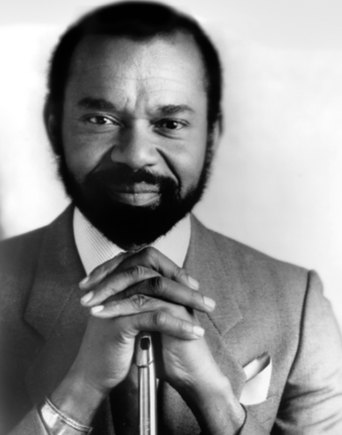"Music is a language, and like any other language, people speak with different accents. An accent is not something you pick up from a book; it’s an aural concept."
Excerpt from Hubert Laws' Lesson: Learning From The Masters
When I was younger and first starting to play, Wayne Henderson and I used to sit and listen to records. We were teenagers living in Houston and we would listen to the solos of trombonist Frank Rosolino. I wasn’t playing flute at that time; I was playing the alto saxophone. I listened to Paul Desmond and Lee Konitz. (Believe it or not, I hadn’t even heard of Charlie Parker at that time.) I would learn their solos note for note. That’s how I started out. I assimilated someone else’s solos and style, and in time that helped me develop my own musical personality.
Music is a language, and like any other language, people speak with different accents. An accent is not something you pick up from a book; it’s an aural concept. When you listen to someone improvise, the notes that are played are only half of the story. An artist’s phrasing, articulation, time and other nuances have to be correct for a particular style, otherwise the “accent” is all wrong. In order to get the “feel” and the rhythm of jazz, I transcribed and memorized several solos. I remember one piece, called “Lover Man,” that Lee Konitz recorded with Stan Kenton’s band. I learned that solo note for note on the saxophone. I did the same thing with a couple of other tunes as well, with Paul Desmond playing alto.
You learn somebody else’s solo to get the feel of it. The feel has a lot to do with the way you articulate a line. People tell me that I articulate differently than other flute players. My concept of articulating came from playing the saxophone. When I started playing the flute, I used the same concept of articulating that I was using when I improvised on the alto. I’m not really conscious of what I’m doing with my tongue. If I think about it, I would say that I’m tonguing on the up beat and slurring to the down beat; but listening to some of my solos, it doesn’t sound as if I’m doing that either. I guess the best way to find out is to take a solo of mine, like the one included in this lesson, and slow down the recording to half speed. Listen for how I’m actually articulating because I’ve never really analyzed it that meticulously. It’s difficult for me to discuss how I make things sound the way I do or how I approach things like articulation, time and feel. I’ve always had a good ear, and those things developed as I was studying other areas of musicianship. I feel that, just as some people are more or less endowed with physical attractiveness, so it is with a musical ear. The important thing for the student to realize is that no matter what you start with, by practicing diligently you can develop to your full potential; and that’s all that anyone can ask of themselves.
For Hubert Laws' complete lesson plus musical examples, including a CD of Hubert playing those examples, plus five more incredible lessons by other great artists, you just gotta pick up Master Lessons For The Creative Musician.
For more information about Hubert Laws check out his website.

